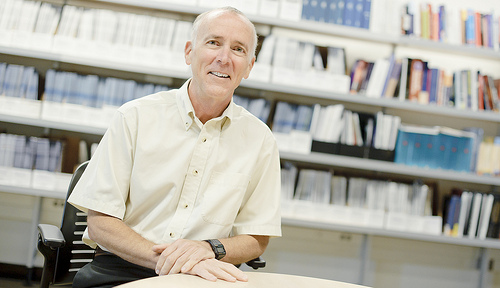Getting Your Data To Your Doctor
October 11, 2013 / By Tiffany Fox, (858) 246-0353, tfox@ucsd.edu
San Diego, Calif., Oct. 9, 2013 — A team of researchers from the University of California, San Diego, has been awarded $617,000 from the National Science Foundation to design an innovative software platform that will automatically process data from personal health sensors in real time and integrate that data with both that individual’s electronic medical records and available environmental health data.
|
The ‘SenseHealth’ cyberinfrastructure, which will be designed at UC San Diego’s Qualcomm Institute, will make it possible to predict (based on the collected data) if a patient requires clinical intervention, and alert both the both the patient and his or her physician if such a need arises. The grant was awarded from NSF prior to the shutdown of the U.S. government.
“It’s natural for the public to assume that, ‘I’ll give my doctors my health sensor data and they’ll know everything about me now,” said UC San Diego School of Medicine associate professor of pediatrics Jeannie Huang, one of the co-principal investigators on the project. “But we’re talking about huge amounts of data. Doctors currently have no method to interpret that data in real time, and even if they did, it’s not the best use of a doctor’s time. Doctors want to interact with patients and not just watch a data stream all day long. This system will do that job for them. It’s the natural extension of the tremendous work in sensor data collection that’s already being done.”
The project, whose overall lead is Qualcomm Institute Assistant Research Scientist Sameer Tilak, expands upon the NSF-funded DELPHI project led by co-PI Kevin Patrick, who directs UC San Diego’s Center for Wireless and Population Health Systems. It also builds upon research conducted in CitiSense, a project led by Bill Griswold of the Jacobs School of Engineering’s Computer Science and Engineering (CSE) department. Another CSE professor involved in SenseHealth, Tajana Rosing, also worked on the CitiSense project with Prof. Patrick. Patrick is a professor of family and preventive medicine, and fellow SenseHealth team member Anthony Gamst is a professor of biostatistics and bioinformatics.
|
SenseHealth will be designed based on a series of prospective and retrospective analyses of sensor-derived data provided by patients with Type I diabetes and patients with asthma at Rady Children’s Hospital. Based on these analyses, the researchers hope eventually to use predictive modeling to warn a doctor in real time, for example, that a diabetic patient’s insulin levels are dangerously low, or even alert an asthmatic patient to have an inhaler at hand because he or she is entering an area with a high pollen count.
These predictive models will account for variables resulting from age, gender, disease or state of health and will also factor in a variety of patient situations, from low-priority scenarios that require no intervention to high-priority scenarios threats to a patient’s health.
SenseHealth’s “distributed stream processing environment” will be built on Storm, an open-source, distributed real-time computation engine. It will also be scalable, meaning it can handle increasing amounts of sensor data from all kinds of sources, including data from smart energy grids, or mobile apps. Open-source software and tools for visualizing data will be developed at the Qualcomm Institute and leverage tiled display wall technology. DELPHI will provide the data center component to store health sensor data.
It will also be built into multiple data centers or clusters to ensure that SenseHealth is fault-tolerant in the event a server or a wireless network goes down.
This approach, said Tilak, will provide a much-needed alternative to the vendor-based approach to aggregating data, which creates “information silos.”
|
“Right now health sensor vendors will sell you the hardware and the software you need to collect and aggregate your data, but what happens if you buy a sensor from a different vendor?” he asked. “We need data collection to be fully integrated.”
SenseHealth will also incorporate dynamic power management and “context-aware” sensing to prevent sensor batteries (and the batteries on sensor-equipped smartphones) from getting prematurely drained. Prof. Rosing's team recently showed that when combining context-awareness with power management in a mobile heath project, it is possible to increase battery lifetime by up to five times.
Not only will the system save on energy costs, it will also reduce costs associated with hospital admissions.
“If we can use predictive modeling to avoid instances when a patient goes to the hospital when he or she doesn’t really need to, it lowers costs for both the patient and hospital, eases the burden on the doctors and avoids hassle for the patient,” explained Tilak. “SenseHealth is an essential step toward providing clinicians with a real-time, 360-degree snapshot to optimize patient-centered, evidence-based decisions and to empower patients to participate in their own health and treatment.”
Related Links
Center for Wireless and Population Health Systems
Media Contacts
Tiffany Fox, (858) 246-0353, tfox@ucsd.edu




